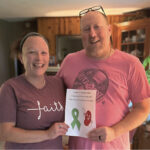In many U.S. cities, the once-ignored, even derided, bicycle is fast becoming a legitimate, preferred form of transportation.
Traffic-choked New York just implemented a bike-sharing program, following in the footsteps of many other cities, including Washington, D.C.
In our state, Pittsburgh and Philadelphia are listed as bronze and silver communities, respectively, according to The League of American Bicyclists, the 35th and 17th top bike-friendly cities for the year of 2012, according to Bicycling Magazine.
Can Harrisburg follow suit?
The answer seems to be a qualified “yes,” but only with a dedication to make it happen, the same commitment that much larger, more congested cities increasingly are making.
“We know that people want to ride bicycles. It’s an up-and-coming hobby,” said Dick Norford, an avid cycler and founding member of Bike Harrisburg, a cycling advocacy group for the Harrisburg region.
With proper signage, bicycle racks and marked cycling routes throughout the city and over the bridges, more cyclists would emerge in Harrisburg, he said.
“We are working on it,” said Ross Willard, a cycling advocate and founder of Recycle Bicycle, a non-profit that helps the in-need community repair and obtain bicycles. “Harrisburg has great potential. It’s a cycling-friendly city if you know where to ride and can avoid the bad areas.”
Something as simple as adding proper bike racks could encourage more people to swap their cars for a more environmentally friendly option. “When you ride your bike downtown, what do you do with it? There’s not enough safe places to park the bikes,” said Norford.
Willard described a scene of a couple who rode their bikes downtown to get sandwiches, and the man entered the shop. “The woman was outside protecting their bikes because there weren’t bike racks,” said Willard. “[And] if we have a bike rack, it’s the wrong design.”
For roads large enough, such as Reily Street, adding a bike lane would be as simple as painting lines and adding correct signage. With properly signed bike lanes, cars would be more alert to their two-wheeled friends and cyclists would feel more comfortable on the road.
“The more people see bicyclists, the more they do it,” said Willard. “I ride up 2nd Street, and I keep up with traffic. By doing so, it tells people that, ‘Wow, a bicyclist is doing what we are doing.’ Gridlock means nothing to a bicyclist, generally.”
While avid cyclists like Willard will continue to lead the vanguard, obstructions remain for the more occasional commuter.
For example, our bridges and their surrounding highways may be the largest impediment to commuters wishing to bicycle to work from the West Shore. Two of the four bridges are highways, making it illegal and unsafe for cyclists to ride on them. The Harvey Taylor Bridge and the Market Street Bridge are legal for bicycles, but they lack adequate signage.
Then there are the city’s roads, which are in terrible shape. Yes, we’re blessed with a continental climate, a great riverfront and a fair amount of flat land, but Harrisburg is missing a key component to becoming a great cycling city—decent infrastructure.
Harrisburg’s roads were never designed to accommodate bikes, a situation made worse when major thoroughfares (Front, 2nd and Forster streets) were turned into urban highways in the 1950s. In addition, the roads are poorly maintained. Fading lane lines, a large number of potholes and lots of bumps and divots make the roads more of an obstacle course than a safe medium for travel.
One ray of hope: until recently, cities now regarded as models for biking suffered from similar conditions–with terrible fiscal situations to boot.
In 1990, Pittsburgh was listed as one of the three worst cities for cycling, according to Bicycling Magazine. Government incentives for businesses and infrastructure development transformed its hilly neighborhoods, small roads and bridges into a safer, happier cycling community.
This translated into Pittsburgh’s local government creating properly signed bike routes and racks. It also worked with the business districts and the community-at-large to offer a better biking environment, while providing monetary incentives for employees to commute to work through a federal tax benefit that reimbursed cycling commuters through their employers. Lastly, the city held many bicycle-related events to educate and encourage bicyclers.
To ascertain ongoing needs, the city even employs a bike/pedestrian coordinator to oversee the development of the city from a bicycler’s perspective, making driving conditions safer for everyone.
So, can Harrisburg follow in the (bike) path of these other cities?
Willard is optimistic.
“Those employees [who cycle to work] are happier, less stressed and have less heart attacks. Pedaling works off their anxiety, and they can do the extra mile through the park on their way home,” said Willard.
In addition, cycling is environmentally friendly, less harsh on our roads and creates healthier residents.
“[Cycling] makes a friendlier community,” said Willard. “It’s more social.”





